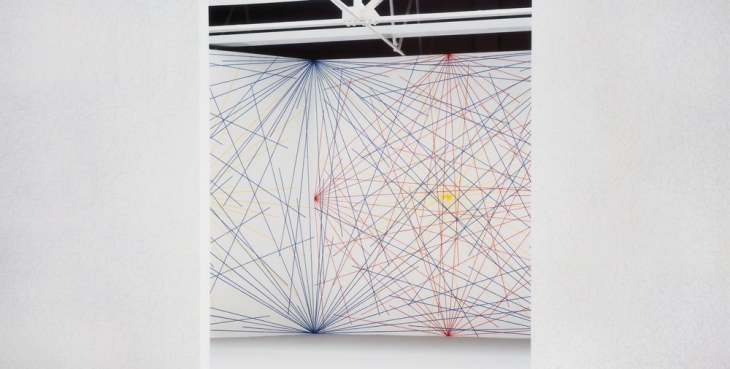

In the Room 5 we find the famous primary structures of Sol LeWitt: white and geometric, able to modify the environment. The Wall Drawing #46, with bent lines, climbs from the floor to the ceiling on the back wall. The staircase that connects the three floors of the Foundation becomes also a place of experimentation and vision. In the same way, slowly moving, we can feel the expressive strength created by the cohabitation among the Wall Drawing #1267 and the Inverted Spiraling Tower in the Room 3: the sensuality of the curve and the composure of the geometric structure give a different life to the space. In this artwork we can see the creative methodology proper of the artist. It is necessary a patient and reflexive gaze, starting from the Wall Drawing #263 at the entrance of the exhibition. It is this meditative attitude that we need for intensely appreciating the complexity of the whole show. They leap to conclusions that logic cannot reach.”. It was Sol LeWitt in 1969 to affirm that: “Conceptual artists are mystics rather than rationalists. An aesthetical experience that gives the possibility of a mystical moment, made of silence, observation and understanding. The whole room becomes a place of contemplation and reflection. The works presented in this way – Structure with Standing Figure, Geometric Figure #9 (+), Complex Form #34, Corner Piece 1 2 3 4 5 6, Geometric Figure #10 (/) – set the spectator in a contemplative dimension, forcing him to take time for the vision. On the left side there are four recesses that contain five works of LeWitt. In the middle of the room there is The Wall Drawing #150, an irregular polyhedro, on whose ten-thousand segments are gently distributed. The Wall Drawing #51 turns the entry into a grid of blue lines, prolific and thin germination that appears like a spatial threshold. In the Room 7 there is the whole visual and sensorial potential that springs from the calibrated and careful mixture of these elements. It emerges a sense of a deep harmony, it is possible to feel the equilibrium between emotionality and thought: it could perhaps speak of a sentimental rationality. The show is focused on three fundamental poles, continually connected: the surface of the Wall Drawings, the volume of the sculptures and the spatial peculiarity of the exhibition rooms. The point of view chosen by the curators, Francesco Stocchi and Rem Koolhaas, it is particularly interesting, a perspective that allows to appreciate the important relationship between the work of LeWitt and the architecture. Twenty-three works are presented: seven Wall Drawings, fifteen sculptures and one photographic installation, wisely distribute on the three floors of the exhibition centre. Between the Lines, at The Fondazione Carriero in Milan, offers an important reflection on the work realized by the American artist along his life. The primary element of this study is the line, that becomes square, cube, polyhedro, mural painting, environmental installation. An aesthetical adventure, extraordinarily accurate, lasted from the Sixties to the Two-Thousands, in the attempt to explicit the archetype of the vision.

Research of a spatial and temporal form, starting from the idea, from the mental process. In Sol LeWitt there is a constant dialogue among these two fundamental dimensions: unity of the opposite elements. “Never did eye see the sun unless it had first become sunlike, and never can the soul have vision of the First Beauty unless itself be beautiful.” (Plotinus, The Enneads)


 0 kommentar(er)
0 kommentar(er)
